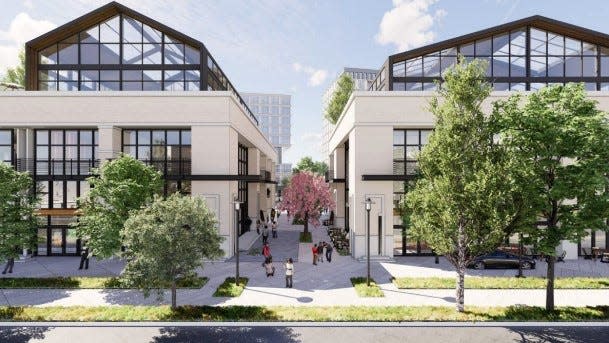Why a redeveloped Belle Meade Plaza will benefit residents and city coffers | Opinion
Re: "Can we take a pause on redeveloping Belle Meade Plaza in West Nashville? | Opinion," by Grace Renshaw, March 13.
The notion that Davidson County has experienced "20 years of unbridled development" is a myth perpetuated by the very people who control the bridle. As a result of their decades of resistance to growth, housing in Nashville is scarce, expensive, and most importantly, never in their backyard. It’s time to take back the reins.
Nashville’s growth has not been evenly or smartly distributed throughout Davidson County. More than half the city’s population growth from 2010 to 2020 occurred in just seven of our 35 council districts: three in the heart of the city representing sustainable urban infill, but four on the city’s outskirts where growth means traffic-inducing, forest-clearing suburban sprawl.
Meanwhile, Davidson County has grown at less than half the rate of the rest of Middle Tennessee since 1990. Our failure to meet urban housing demand has pushed new development further out into Middle Tennessee’s pastoral lands and home prices in the city further out of reach for all but the extremely wealthy.
Hear more Tennessee Voices: Get the weekly opinion newsletter for insightful and thought provoking columns.
Flat population growth was a result of classist policies
Those claiming to be the greatest victims of growth often hail from areas that haven’t grown at all. Since Metro consolidated 60 years ago, the population of Belle Meade has declined while the rest of the county has nearly doubled.

Flat population growth in neighborhoods from East Nashville to Hillwood is an intentional result of upper-class political power exercised through exclusionary zoning, historic overlays, and concentrated pushback against multifamily development.
These tactics combine to form a suffocating, antiquated girdle suppressing growth in the city’s midsection between downtown and the county line.
The public ear has grown attuned to classist dog whistles, so NIMBYs (Not in My Backyard) now attempt rational defenses of the status quo. The resulting claims are not just baseless, but backwards.
Take the main arguments against Belle Meade Plaza, common to almost every proposed development in Nashville: traffic and infrastructure. Density does not create either issue, but it does offer a solution to both.
Sign up for Latino Tennessee Voices newsletter:Read compelling stories for and with the Latino community in Tennessee.
NIMBYism is worsening traffic
Ten-year traffic counts are down on streets that run through neighborhoods that have welcomed infill, like Charlotte Ave through Capitol View, Third Avenue N through Germantown, and Music Row’s 16th and 17th Avenues.
New residents in these areas live closer to jobs, schools, and stores they can access with short car trips or no car at all. Traffic is up on roads connecting downtown to distant sprawl.
Not only are alternatives to driving less viable in these suburban developments, but each car trip is longer, contributing additional miles to countywide traffic congestion and compounding the unsustainable environmental impact of sprawl.
Of course, NIMBYs don’t mind if traffic worsens in Nashville, so long as it’s not in their backyard.
Sign up for Black Tennessee Voices newsletter:Read compelling columns by Black writers from across Tennessee.
Nashville would benefit from more property tax revenue
In addition to being more environmentally sustainable, urban infill is more fiscally sustainable as well. Compared to a similarly-sized area of nearby single-family homes, Belle Meade Plaza would contribute more than 10 times as much in property taxes to the general fund that pays for city infrastructure like sidewalks and schools.

Redeveloped as proposed, the new plaza would revitalize a now-buried creek, create a greenway extension, and contribute an additional $2.5 million in property taxes for the city each year.
That’s a recurring annual bonus equal to more than half what the city allocates for new sidewalk construction, generated by allowing just one parcel to develop up to the democratically-approved standards set out in our general plan.
Solutions to major citywide problems are often hard to find and even harder to fund. But help with skyrocketing housing costs, traffic woes, and infrastructure maintenance is standing right in front of us and asking for nothing more than permission to move forward. Giddy up.
James Guthrie is a 20-year Davidson County resident and a volunteer with Housing Now Nashville, a non-profit advocating for more attainable and sustainable housing in Nashville.
This article originally appeared on Nashville Tennessean: Redeveloped Belle Meade Plaza will benefit residents and city coffers
